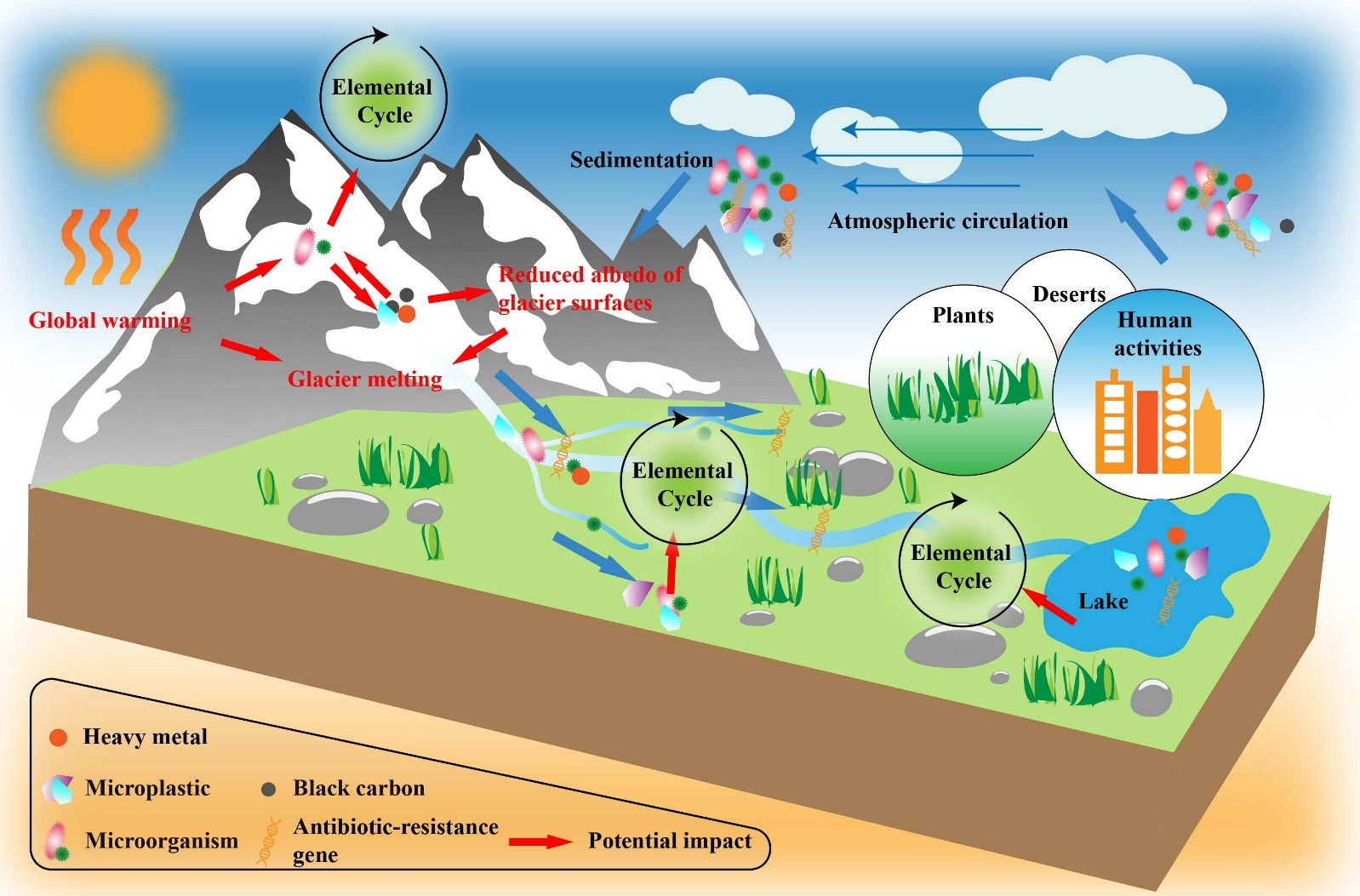Microscopic life inhabiting glacial habitats on the Tibetan Plateau
Published 11 June, 2025
Glaciers are important regulators of the Earth's climate system, affecting the hydrological cycle, energy balance and the development of downstream ecosystems. Other than the polar regions, the Tibetan Plateau stands as the region with the largest glacier area, earning it monikers such as “Water Tower of Asia” and “the Third Polar Region”. In spite of its great importance, however, human activities have caused increased glacier retreat, potentially impacting downstream environmental balance.
“Glaciers contain a variety of habitats including ice, snow, cryoconite, and deglaciated soil that harbor rich microbial communities — the main bearers of glacial life activities,” says Sang Ba, corresponding author of a new review on the topic published in Water Biology and Security. “We wanted to open a microbial perspective-driven window for researchers to protect the glacial habitats of the Tibetan Plateau.”
To that end, they have synthesized studies on the interactions between microbial communities and the intra- and extra-glacial ecosystems of the Tibetan Plateau., and found that exogenous microorganisms can be deposited on the glacier by atmospheric circulation.
“The special geo-climatic characteristics of glaciers may have prompted these microorganisms to adapt to this extreme environment through evolution and cooperation. These microorganisms are involved in the cycling of biogenic elements in glaciers, providing feedback to the Earth's ecosystem,” explains Ba.
However, increased environmental pollution may affect the glacier microorganisms. Some pollutants synergize with climate warming to accelerate glacial melting, with meltwater carrying microorganisms, nutrients, and pollutants into downstream ecosystems, which may have far-reaching impacts on downstream ecosystems and the global climate.
“Reducing source pollution, strengthening international cooperation, implementing long-term monitoring, developing predictive models, and tapping into special microorganisms are the way forward in guarding the clean land of the Tibetan Plateau glaciers in the future,” says Ba.

Contact author name, affiliation, email address: Sang Ba; Provincial Level of Mitika Wetland Ecosystem Observation and Research Station in Tibet Autonomous Region, Tibet University; basang2003@utibet.edu.cn
Funder: National Natural Science Foundation of China and Tibet Science Foundation Grant.
Conflict of interest: The authors declare that they have no known competing financial interests or personal relationships that could have appeared to influence the work reported in this paper.
See the article: Glacial microbial-environmental interactions on the Tibetan Plateau: A review, Jiajie Xu, et al. 2025, DOI 10.1016/j.watbs.2025.100366